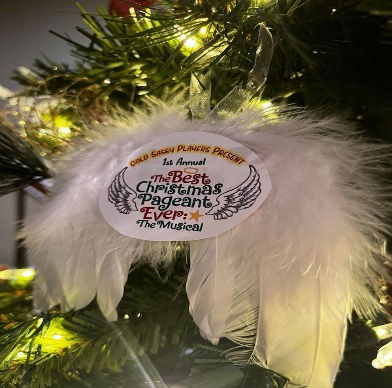Interracial Relationships: What You Need to Know
- Bella Young
- Mar 7, 2022
- 6 min read
Updated: Jul 5, 2022
By Bella Young
Valentine’s Day, the day of love, has recently passed. Couples went on dates, girls got together to go shopping, guys did whatever guys do, and I…well, I stayed at home and ate ice cream (which was terrific). However, it was not always like that. I used to be in a relationship, an interracial relationship. So, in the theme of connect, let’s talk about the history of interracial relationships and hear from people who have been in or are currently in an interracial relationship.
First, what is an interracial relationship? An interracial relationship is a relationship that involves people from different races or racialized ethnicities. You could have a Black and White couple, a White and Hispanic couple, a Black and Asian couple, and so on. Today, these relationships are mostly accepted, but there was a time when they weren’t. Let’s dive into some history.

Let’s start with John Rolfe, a White male, and Pocahontas, a Native American female. Their marriage is said to be the first interracial marriage in North America. John was a simple tobacco farmer, and Pocahontas was a Powhatan Indian. These two met, fell in love, and were married in 1614. This marriage brought about peace between the settlers in Virginia and the Powhatan Indians. However, interracial relationships were sadly unaccepted a few years later, and in 1664, Maryland passed the first British colonial law banning marriage between White and Black people. This law not only banned interracial marriages between Black and White people, but it also ordered the enslavement of White women who had married Black men. Then in 1691, in the same state where the first interracial marriage happened, Virginia banned all interracial marriages and white men and women who married black people or Native American people were threatened with death. Many states followed Maryland and Virginia, and in 1883, in Pace vs. Alabama, the U.S. Supreme Court unanimously ruled that state-level bans on interracial marriage did not violate any of the 14th Amendment and that laws banning interracial marriages were therefore legal. No matter if you were a Black slave or a White slave owner, if you were found in an interracial marriage or intimate relationship with a person of a different race, you would be punished. In 1922, following the rise of hate for Asians and Asian Americans, any American who was in an interracial relationship (especially with Asians) was stripped of their citizenship. Finally, in 1964, In McLaughlin v. Florida, the U.S. Supreme Court unanimously ruled that laws banning interracial relationships violate the 14th Amendment. In 1967, Pace vs. Alabama was finally overruled. Interracial marriages and relationships were now officially legal.
Now that we have gone over some history, let’s talk about couples who broke the rules when interracial relationships were banned. All three of these couples are Black and White couples. Other races were involved in interracial relationships, but there are more stories of love and tragedy between Black and White couples. First is a man we all know, Frederick Douglass, a former slave and leader of the abolitionist movement. After his first wife died, he remarried Helen Pitts, a White Suffragist. They were met with hate from strangers and their own families. However, they were unashamed and in love. Next, Joseph Philippe Lemercier Laroche was a Haitian man who fell in love with a White woman. Due to the hate they received, they decided to move back to Haiti. The original boat they would go on refused to let Joseph dine with his family, so they switched to the Titanic. Unfortunately, Joseph died on the Titanic after saving his wife and children. He would not have been on the boat if the original ship he was going on had not discriminated against him. Finally, there was Richard and Mildred Loving who were married in D.C in the 1960’s, and lived a mostly happy life until they were awakened and arrested in Virginia for being married. Richard was a white male, and Mildred was an African-American and Native American woman. Their case ultimately went to the Supreme Court, and the Court ruled in favor of the Loving family. They went on to help overturn Pace vs. Alabama.

The bravery and love in these couples are admirable, but married couples weren’t the only ones to break the rules. All of the previous couples were American, but one British man captured hearts and broke the rules. In the 1920s and 30s, there was a famous Black Cabaret singer named Leslie “Hutch” Hutchison. He was fascinating, or so all of the White women thought (I would have to agree). Leslie got into multiple affairs with White women, including royal White women. Women of any race could not seem to stay away from him. Upon doing my research, I noticed a common theme. Even though interracial relationships were banned and many White women had to pretend not to like Black men, they did. The heart wants what the heart wants.

Now, with some history and examples down, let’s go to our interview with Joshua Thompson, a godly Black man married to Meagan Thompson, a godly White woman. They have two beautiful biracial children, Alexander and Leonidas. Joshua and Meagan met in church but did not notice each other. They were reintroduced at an event several years later, and they connected. He was drawn to her maturity, eyes, and caring nature. When I asked Mr. Thompson whether he or his family was surprised that he ended up with a White woman, no one was. They had racial conversations when he was younger and his immediate family had no problem with his pattern of dating White women. In Meagan’s family, dating itself was not a common topic, but her family was accepting when Meagan started dating Joshua. Overall, everyone was welcoming and supportive.
Since Mr. Thompson has two biracial kids, I asked him what racial conversations, if any, they had at home. He responded by saying he has race-based conversations and his answers always come from the Bible. He teaches his children, “Opinions change, but God’s Word stays the same.” He teaches his children what God says. He also teaches them to “not pick sides.” Many people want you to choose between one race or the other, but you can love everyone, just as God commands us.
I finally asked him what advice he would give for interracial couples or simply couples in general. His main advice is to go into the relationship with your faith, keep Christ #1, know that every experience will be different, be clear in how you communicate, try to understand before you accuse, be open, work on how you react, joke, and prioritize truth and grace. No matter what, love God and love people.
I loved Mr. Thompson’s advice and wanted to see what other people in interracial relationships thought as well. I asked Vivian Crawford, who is a White and Hispanic woman in a relationship with an Ethiopian man named Natey, whether or not she agreed with Mr. Thompson’s statement. Vivian agreed that taking Mr. Thompson’s advice will help keep a relationship healthy. When asking Vivian if she had any advice for those in interracial relationships or relationships in general, she said to set up boundaries in the beginning of a relationship and keep to them.
Finally, I looked back at the interracial relationship I was in that had lasted roughly 4 years; I realized that loving each other entirely is what we were missing. He and his family could have loved me and seen me as more than my race, and I could have tried to understand his experiences more. Putting Jesus in the center of every relationship, interracial or not, won’t fix every problem but will offer a loving God, who created all people, to go to for guidance.
This is a heavy topic, and overall I want you all to be inspired, understand, and love more after learning about this information. However, I realize that you may or may not face some backlash for being in or accepting interracial relationships (yes, people still disagree). The prominent argument people, especially Christians, will use is references in the Bible that state that people should stay with their own “kinds.” How can you respond?
Listen to their side, be kind and considerate.
Go to the Bible! Look at the context. Most of the time, people take the Bible out of context. For example, in Malachi 2, God is supposedly condemning Moses for marrying outside his “kind” but God is actually condemning Moses for marrying someone with a foreign God and not because she is from a different “kind.”
Explain your reasons. They may or may not agree with you, but it is okay. You did your part by spreading the truth AND being loving.
So, all in all, what would I say is the theme of this article? Simple. No matter what kind of relationship you are in, platonic, romantic, interracial, etc., love people and be compassionate. We need to learn how to truly love and connect with each other when we differ from each other in looks, beliefs, opinions, etc. Don’t let differences separate, let them connect you with others.
Sources





Comments